Nestled along Historic Hwy. 49 on the northern edge of Calaveras County you’ll find charming and historic Mokelumne Hill—an entire town that is designated as a California Historical Landmark. A trip to Mokelumne Hill (or “Moke Hill as locals call it) isn’t just for the history lovers out there because this authentic Gold Country town also offers a perfect retreat for anyone who is looking to escape the grind.
The name Mokel-umne comes from the Yokut Indians of the Central Valley, referring to the “people of the Mokel.” The discovery of gold in 1848 led to the subsequent Gold Rush in California in 1849, bringing those hoping to strike it rich from around the globe. Mokelumne Hill soon became the main trading center for the area, and eventually Calaveras’ county seat until 1866. Let’s take a peek at all of the “gems” that can be discovered here…
HOTEL LEGER
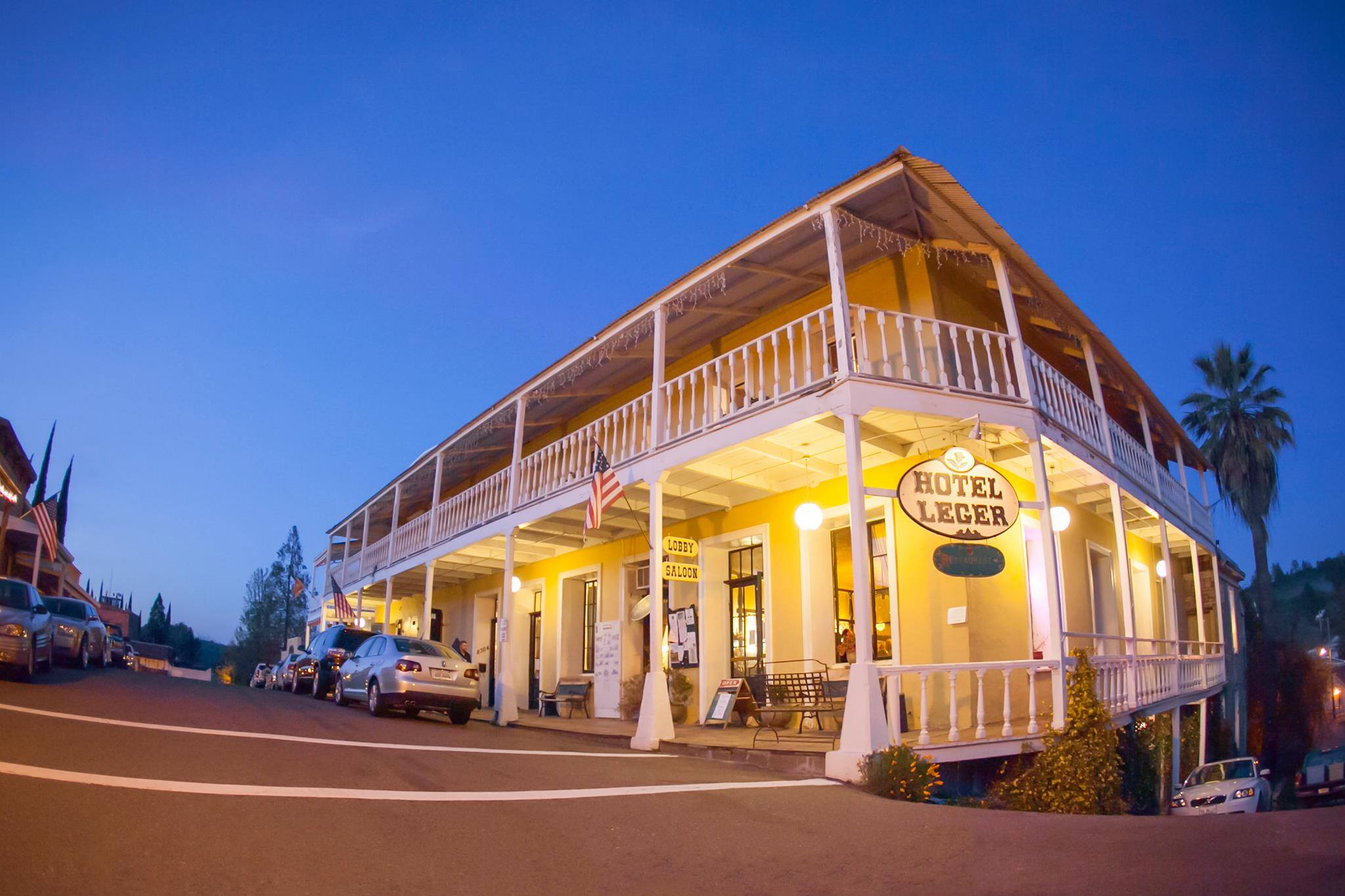 Historic Hotel Leger is one of the oldest inns in the state of California with 13 historic rooms, a saloon that entertained notorious folks such as Black Bart, and an elegantly rustic restaurant offering a full service menu including gluten-free and vegan options. Frenchman George Leger became a partner in the hotel called Hotel de France back in 1851 and ran the successful lodging until his death in 1879. Mokelumne Hill suffered devastating fires in 1854, 1865, and 1874 causing the hotel to be rebuilt at least three times.
Historic Hotel Leger is one of the oldest inns in the state of California with 13 historic rooms, a saloon that entertained notorious folks such as Black Bart, and an elegantly rustic restaurant offering a full service menu including gluten-free and vegan options. Frenchman George Leger became a partner in the hotel called Hotel de France back in 1851 and ran the successful lodging until his death in 1879. Mokelumne Hill suffered devastating fires in 1854, 1865, and 1874 causing the hotel to be rebuilt at least three times.
Now, the Hotel Leger is undergoing a few renovations and updates to include many modern day comforts while keeping its historic, Gold Rush charm. One thing that may not change however is that Mr. Leger might still be spotted wandering his hotel, checking in on his guests from time to time.
THE MOKELUMNE RIVER
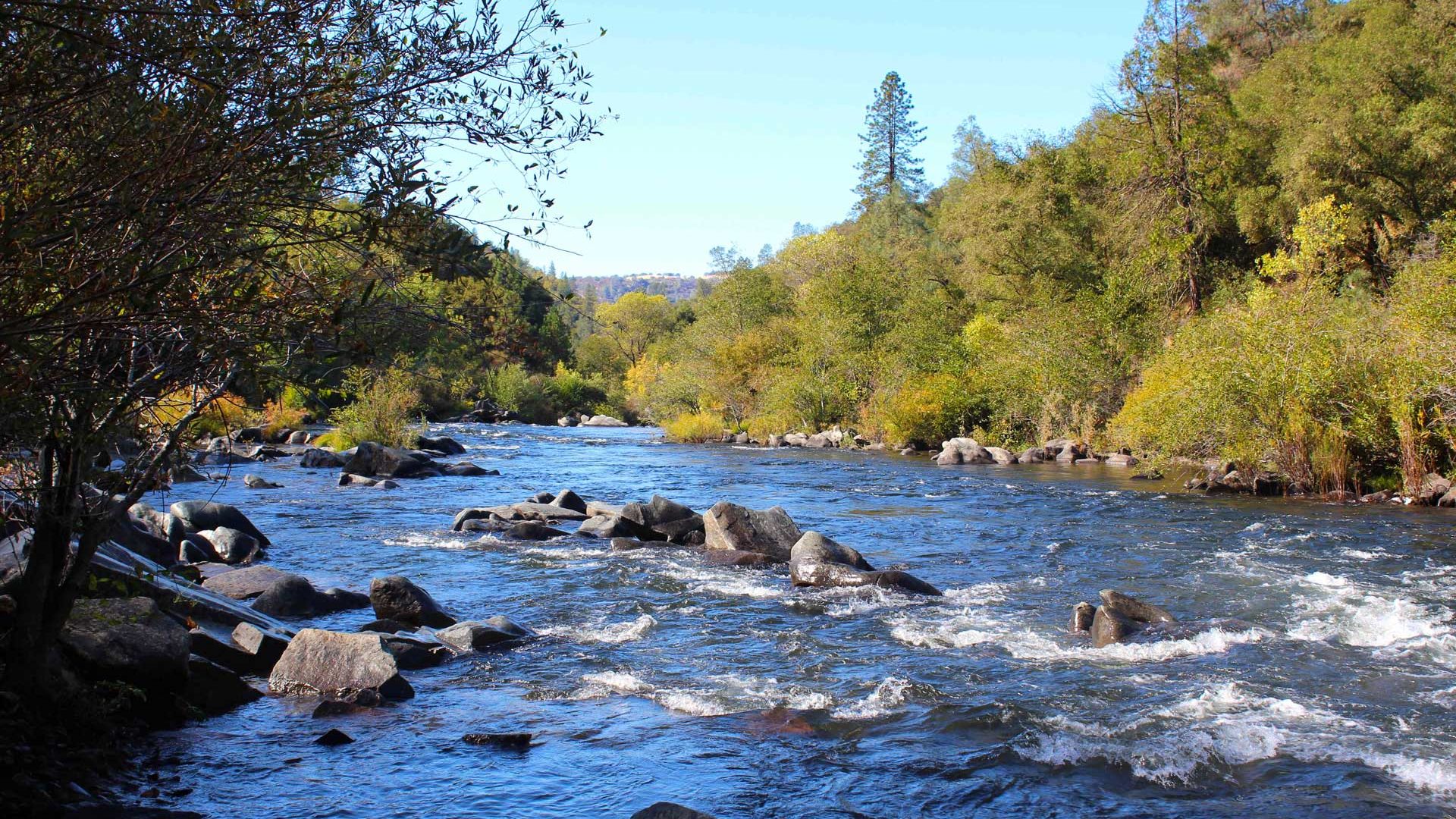 Winding 95 miles through Northern California from the Sierra Nevadas to Sacramento-San Joaquin River Delta, the Mokelumne River is a beautiful place to bring a chair, a picnic, your fishing pole or a gold pan, and watch the river ripple by. Plan a summer trip, raft the whitewater, or simply just float down the river.
Winding 95 miles through Northern California from the Sierra Nevadas to Sacramento-San Joaquin River Delta, the Mokelumne River is a beautiful place to bring a chair, a picnic, your fishing pole or a gold pan, and watch the river ripple by. Plan a summer trip, raft the whitewater, or simply just float down the river.
Public access to the Mokelumne River is available at the Middle Bar Bridge area at the Mokelumne River Whitewater Trail Middle Bar Launch site on Hwy. 49 just a few miles outside of town off of Electra Road.
SHUTTER TREE PARK
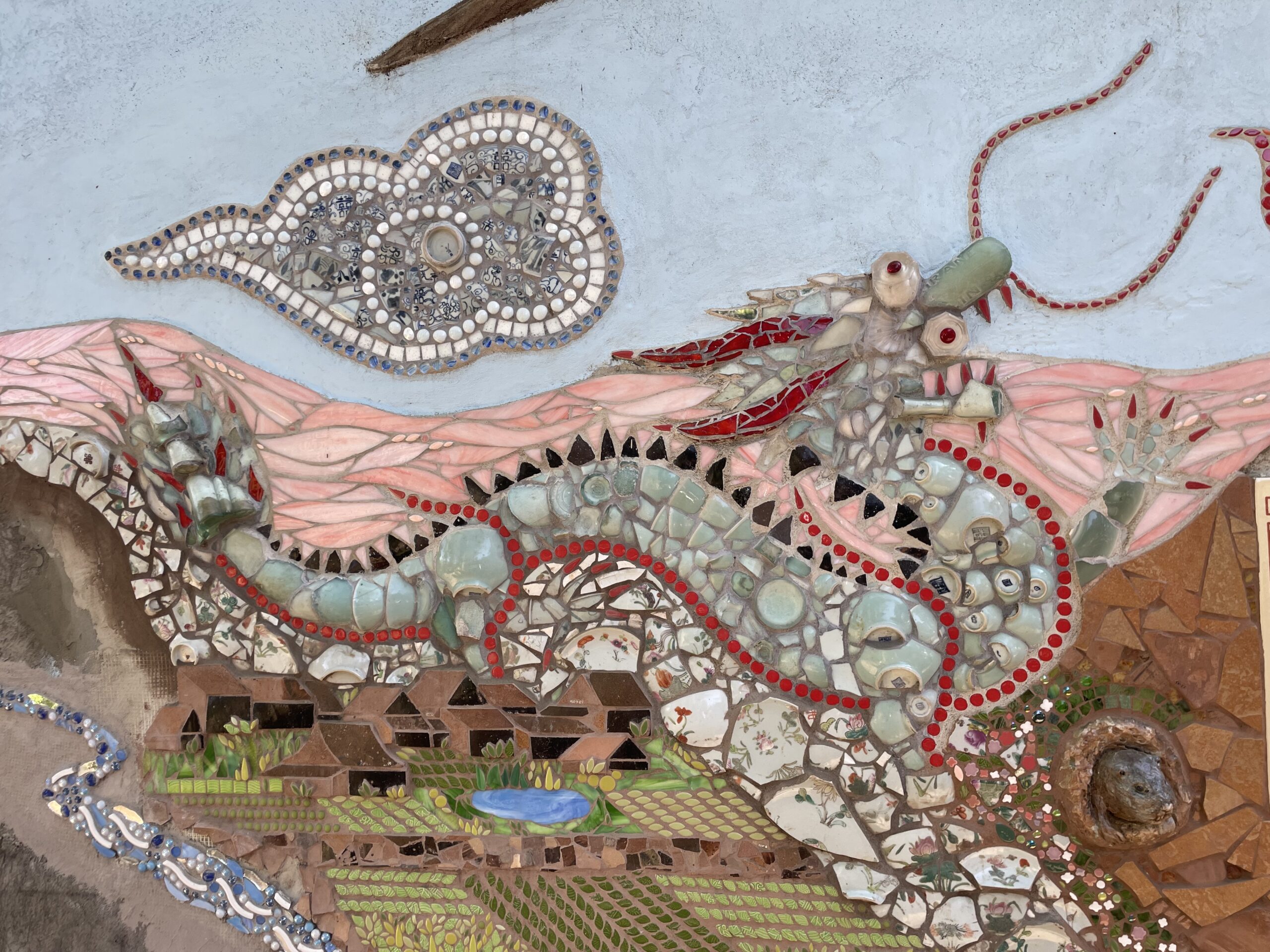
Shutter Tree Park is nestled just at the end of downtown Mokelumne Hill and is the central location for community celebrations or just a lovely day playing outside. The park gets its name from an iron shutter that came from the store of a Chinese store owner named Chung Kee. Due to fire and the dwindling local Chinese population, Kee’s store closed in 1910, however one of the shutters from the store became encased in a group of Chinese Trees of Heaven. After the trees died, the iron shutter became a part of the sculpted art mural now found in the park that looks over where Chung Kee had his store. The art mosaic, lovingly created by local artists shows the history of Mokelumne Hill from the last few hundred years. A portion of the mural includes bits and pieces of broken porcelain bowls and ceramics brought by the Chinese who sought their fortune in this little California town.
RENEGADE WINERY
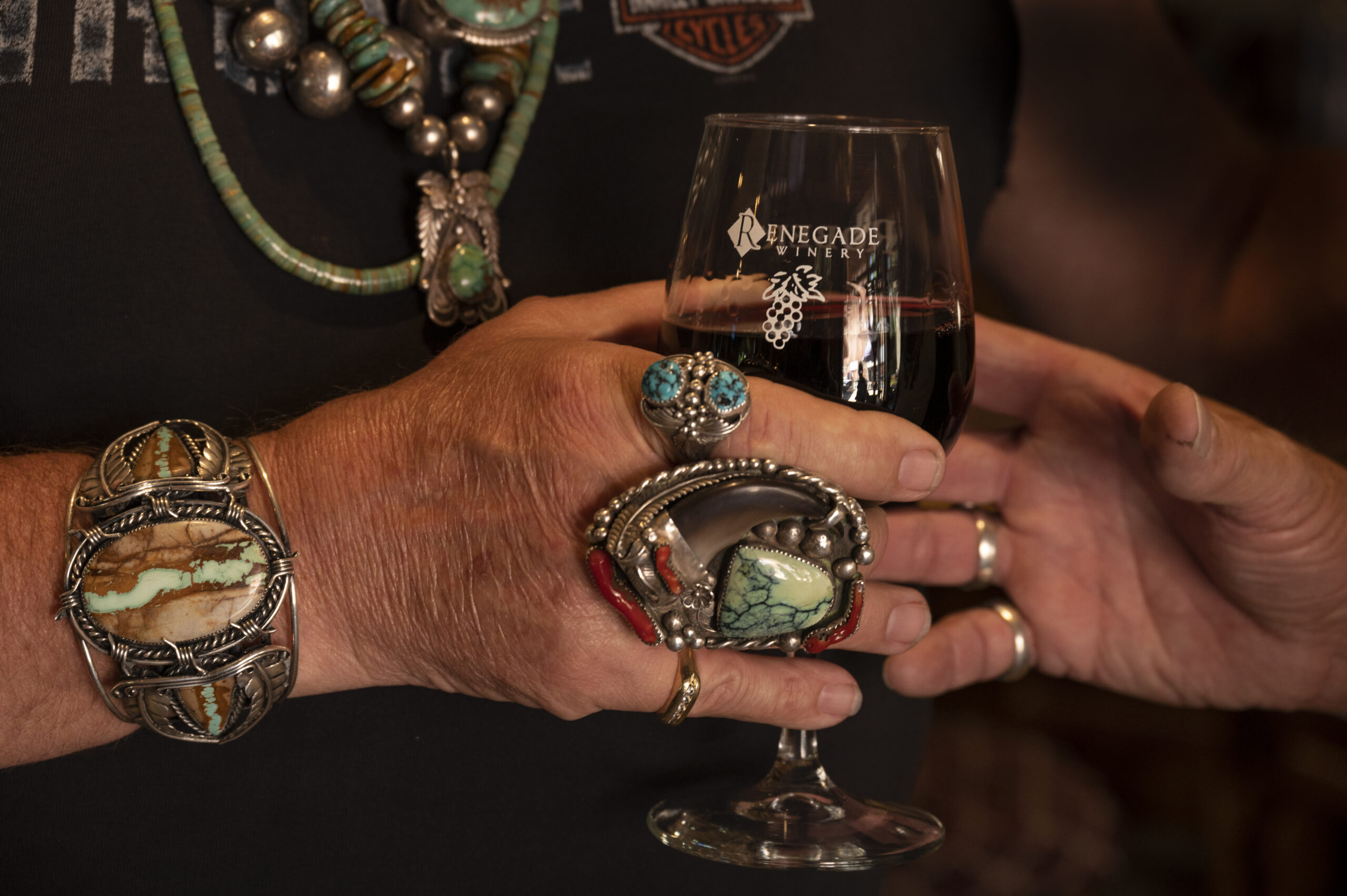
After exploring and walking through town, relax and unwind with live music, good food, and great wine at Renegade Winery where you are sure to find owners Mark and Sue Rueger behind the counter pouring barrel samples and telling stories. Never seen a winery in action? You can’t get more up-close-and personal than you can here…their winemaking facilities are attached to the tasting room and open for touring. Located in the old “Union House”, Mark and Sue extensively renovated the property on Main Street and cultivated a warm, comfortable, and pet-friendly environment where everyone can, as the sign says, “Enter as Strangers, Leave as Friends”. Open Fridays and Saturdays 12:00 to 7:00 and, most of the time, live music plays to warm up the whole vibe. Sundays they serve delicious breakfast and lunch on the patio from 8:00 am to 4:00 pm!
POSTERITY CIDERWORKS

Prepare to be warmly welcomed by the owners of Posterity Ciderworks and tour where the magic happens before tasting small batch alcoholic ciders made with heritage apples, pears, and quinces. Wild, rural, and rare” describes which fruit Brendan (owner, orchardist, and cidermaker) and Kris (owner, operations, and good pie fanatic) use to craft Posterity’s ciders. “Our goal is to give our community a reason to keep these old fruit trees around. In 2020, we began picking apples from local long-forgotten homesteads and passed-down family orchards…Not only did we discover some fantastic cider making apples, but we uncovered stories that we think everyone should hear”. Make sure to include this Moke Hill gem on your next trip to Calaveras. Here’s a great article from the San Francisco Chronicle about Michelin start restaurants now pairing their menu with ciders from Posterity Ciderworks.
DOWNTOWN SMALL TOWN CHARM
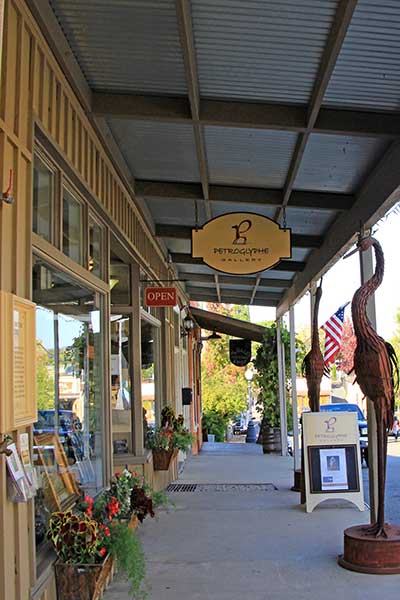
Stop in at Moke Hill Nuts/Mok-A-Java for a slew of yummy samples for your tasting pleasure or for a morning cup of coffee. Don’t miss one of the biggest gems you’ll find along Main Street—Petroglyphe Gallery—a contemporary art gallery in an unlikely spot that not only features stunning art from a variety of artists, but offers great events throughout the year. Pop into For Succ Sake, see their wide selection of succulents, house plants and decor, and all kinds of creative, unique items. Don’t miss the downtown Moke Hill events like the truly American and family-friendly July 4th Independence Parade and Celebration as well as the small-town Christmas events held right on main street Moke Hill. Let’s not forget the Mokelumne Hill Historical Society, which also serves as the library where you can find a new favorite author from among their books for sale on the porch and pay in a depository box by the front door – an honor-system trust that’s adorable and totally Moke Hill.
Every July 4th Mokelumne Hill hosts its quintessential small-town-America Independence Day celebration, and Shutter Tree Park provides shade for the children’s games and activities. In September and October, free concerts are held in the park, so bring a low back chair, sit back and relax with the locals to enjoy the onset of fall.
CHINA GARDENS & GOLD RUSH HISTORY
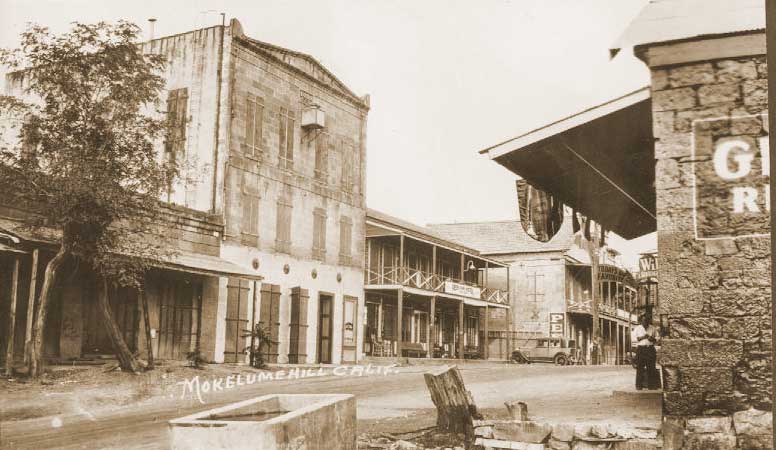
History buffs will enjoy the Gold Rush era architecture in Mokelumne Hill along Center Street, the main street of downtown. Photographers will find ample opportunity to get some great Gold Country shots here. Walk along the path to see a seasonal waterfall, garden terrace walls built by the Chinese inhabitants during the Gold Rush, many blooming plants, and a view of the Mokelumne River Canyon.
The Mokelumne Hill History Society owns the 3+ acres that include the historic Chinese Gardens and welcomes visitors to see the terraced stone gardens that date back to the 19th century. While the entire town of Mokelumne Hill is a designated California Historical Landmark, in January of 2023, the Chinese Gardens specifically were nominated for the National Registry of Historic Places. Not only do the gardens hold historic interest, they also hold important archaeological insights into the large Chinese population who helped to establish Mokelumne Hill as the leading and central trading town during the Gold Rush in Calaveras County. From the California Department of Parks and Recreation – “Situated on the northeast edge of Mokelumne Hill’s historic Chinatown, the district encompasses the archaeological remains of a commercial market garden operated by the town’s Chinese residents between the 1850s and 1898, a small residence area and the community’s Buddhist Temple. As the only known extant Chinese garden in California, the district represents a unique association with Chinese commercial agriculture and offers potential information on agricultural methods and the lifeways of the gardens’ caretakers”.

